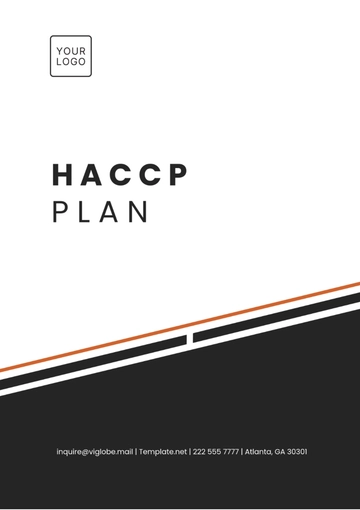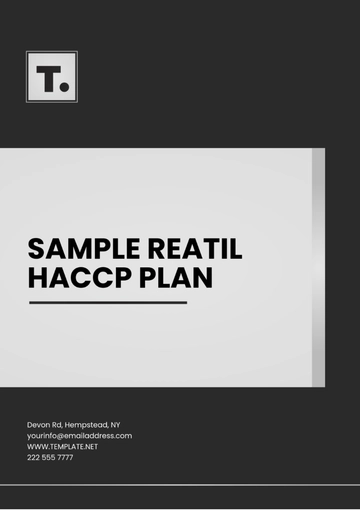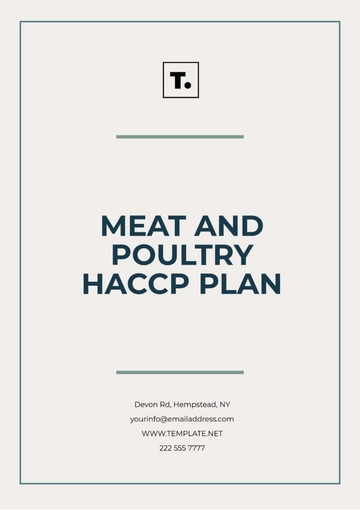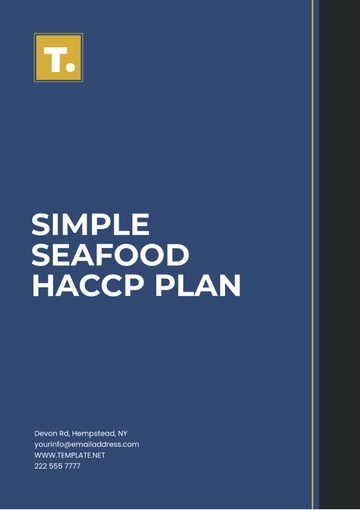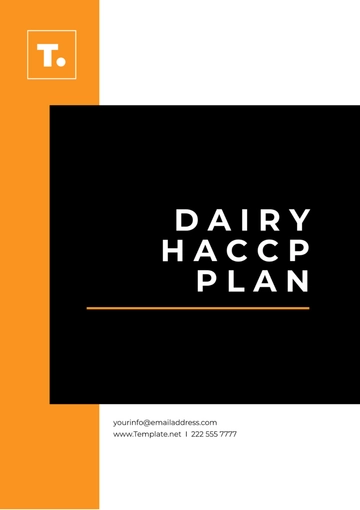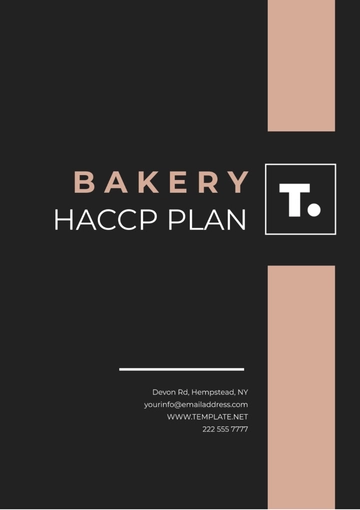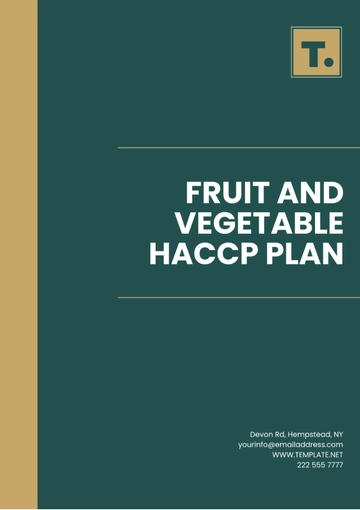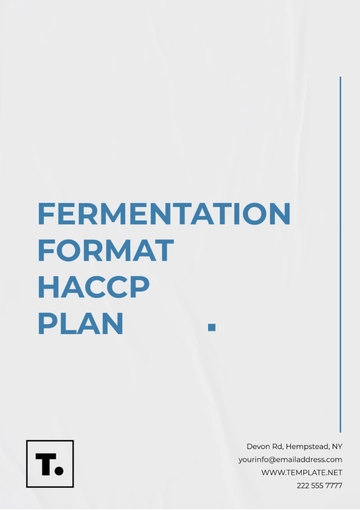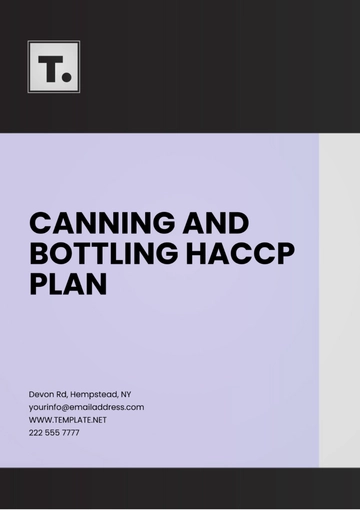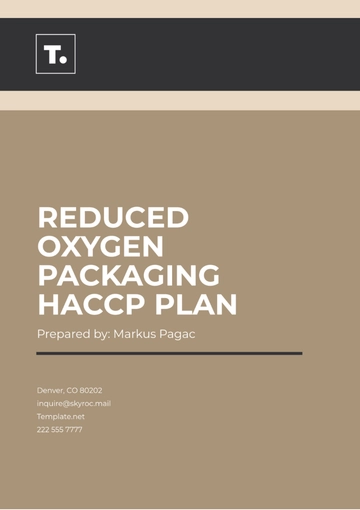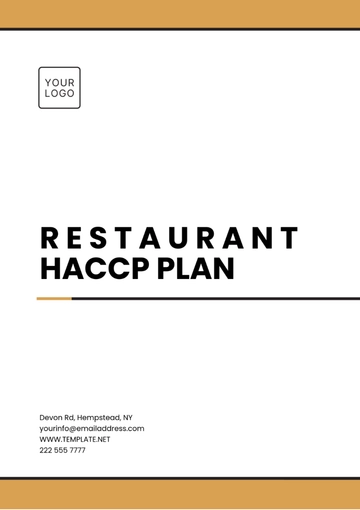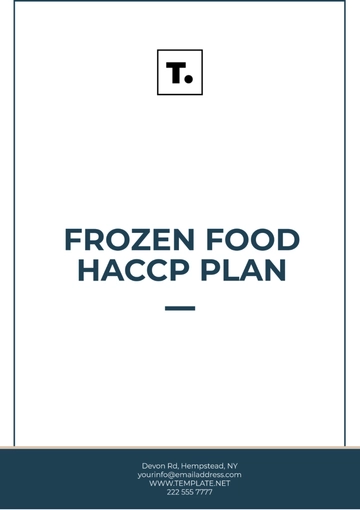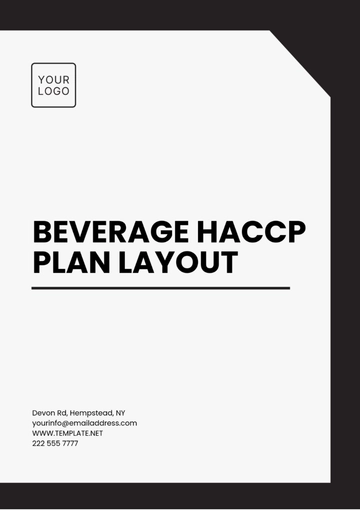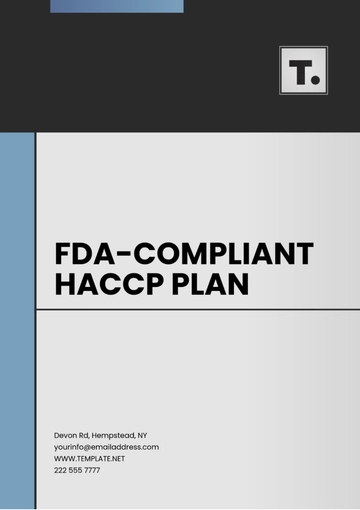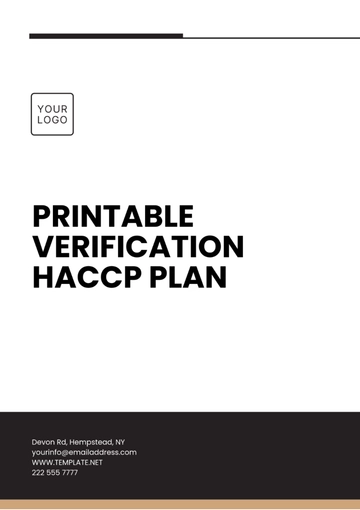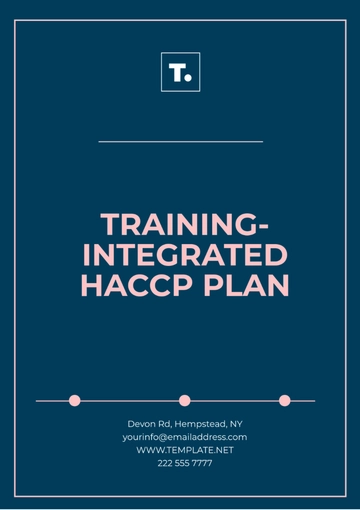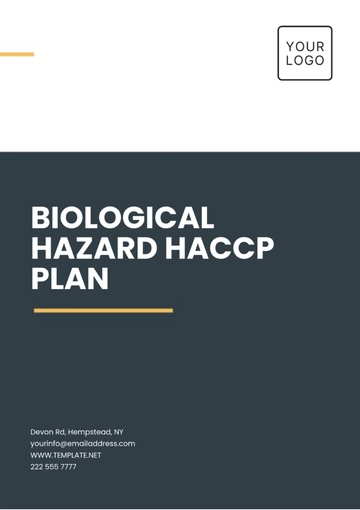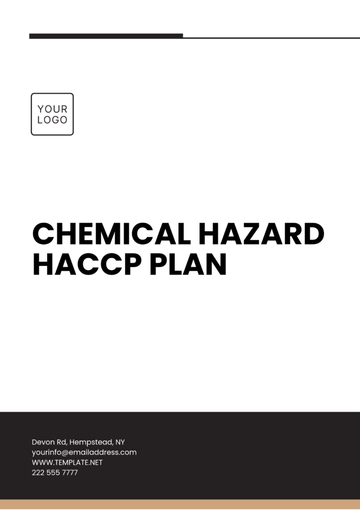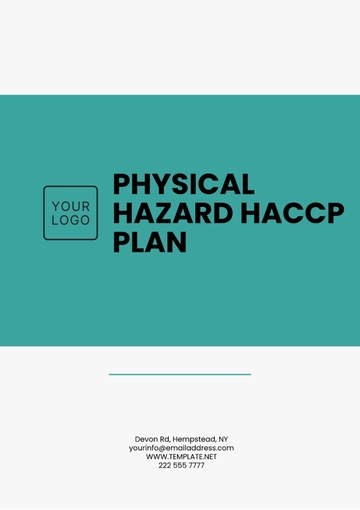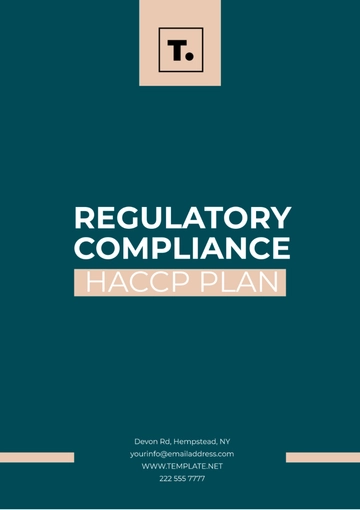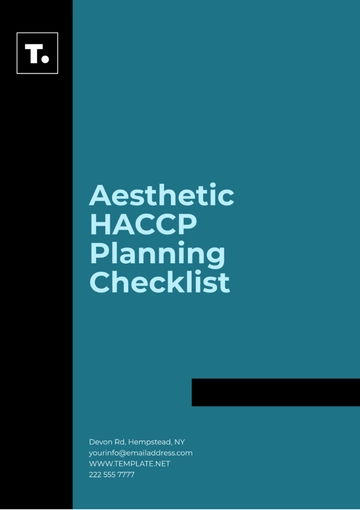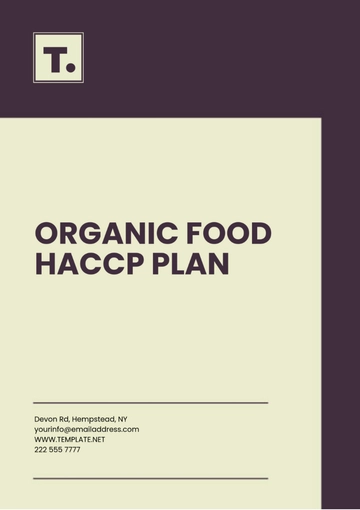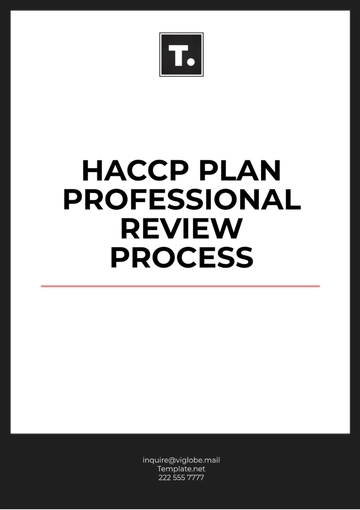Free Canning And Bottling HACCP Plan
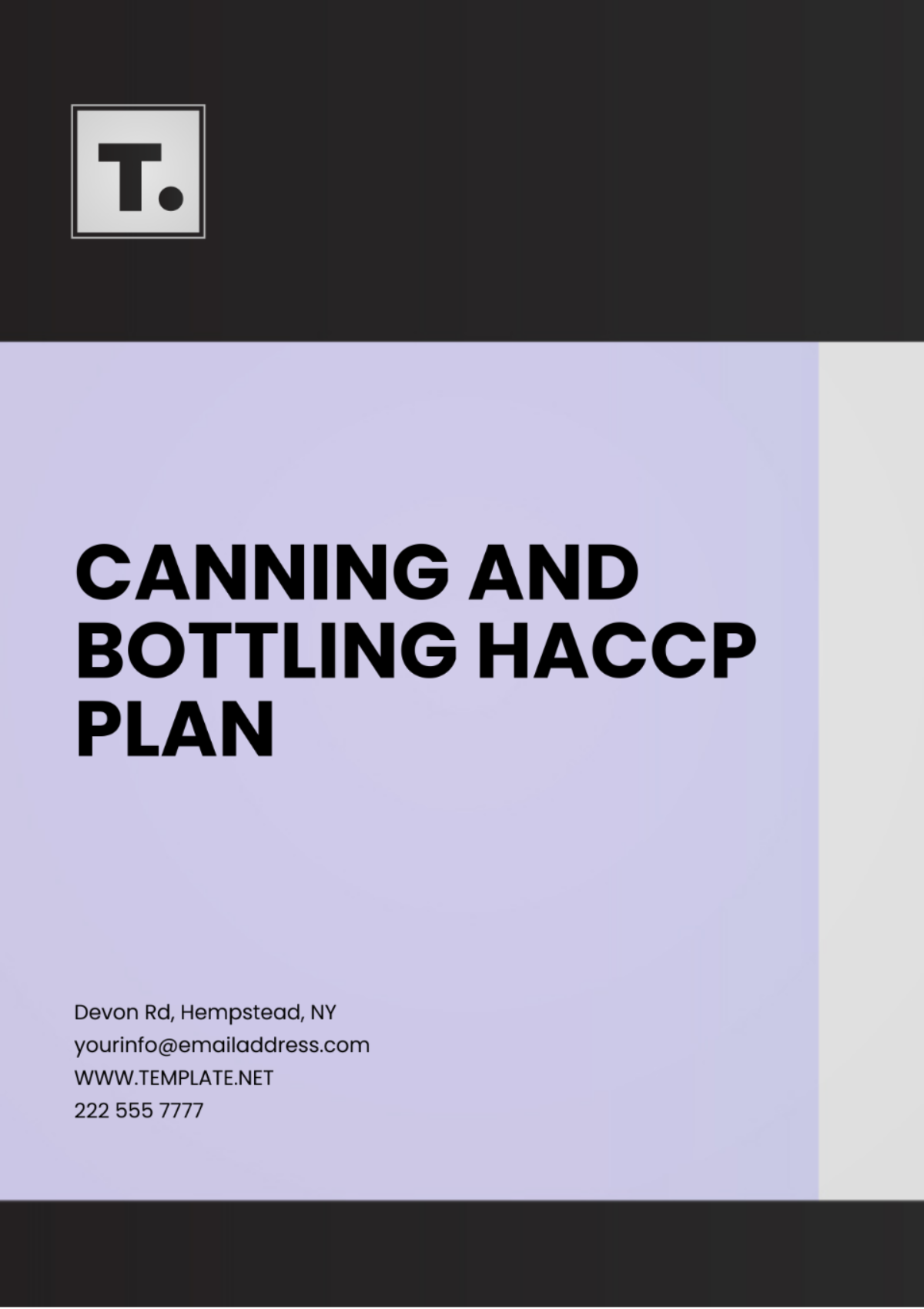
Date: July 10, 2060
Prepared by: [YOUR NAME]
I. Introduction
This Canning and Bottling HACCP Plan outlines the procedures and protocols designed to ensure the safety and quality of our canned and bottled products. This plan adheres to food safety regulations and standards, including the USDA and FDA guidelines, aiming to identify, evaluate, and control hazards throughout the production process. The objective is to protect consumer health and maintain product integrity, ensuring that every product is safe for consumption and meets quality expectations.
II. Team Composition
The HACCP team consists of multidisciplinary professionals responsible for the implementation and oversight of the HACCP plan. Team members include:
Quality Assurance Manager: Luke Reese, responsible for overseeing all quality assurance processes and ensuring compliance with safety standards.
Production Supervisor: Noah Duncan, in charge of day-to-day operations on the production floor and ensuring staff adherence to safety protocols.
Food Safety Specialist: Liam Adams, an expert in food safety regulations and practices, is responsible for training staff and conducting risk assessments.
Regulatory Affairs Officer: James Carter, responsible for ensuring compliance with local, state, and federal regulations.
Maintenance Supervisor: Laura Davis, overseeing equipment maintenance and sanitation practices.
III. Product Description
This section provides a detailed description of the products being canned or bottled:
Product Name: Organic Tomato Sauce
Ingredients: Organic tomatoes, salt, organic basil, garlic, onion, citric acid.
Packaging Type: Glass jars (16 oz) and aluminum cans (24 oz).
Shelf Life: 24 months from the production date when stored in a cool, dry place.
Storage Conditions: Store in a cool, dry area away from direct sunlight, at temperatures between 50°F and 75°F (10°C to 24°C).
Intended Use: Ready-to-use sauce for cooking and meal preparation.
IV. Hazard Analysis
A thorough hazard analysis identifies potential hazards associated with the canning and bottling process. Hazards may include:
Biological Hazards:
Clostridium botulinum: Risk from improper canning methods.
Salmonella: Potential contamination from raw ingredients.
Chemical Hazards:
Residual pesticides on organic tomatoes.
Allergens such as garlic affect sensitive consumers.
Physical Hazards:
Foreign objects (e.g., glass shards from broken containers, metal fragments from machinery).
V. Critical Control Points (CCPs)
This section identifies critical control points in the production process where hazards can be effectively controlled:
Receiving Raw Materials: Inspection and testing of incoming ingredients, including visual checks for quality and laboratory tests for pesticide residues.
Cooking Process: Monitoring temperature and time to ensure proper pasteurization at a minimum of 210°F (99°C) for 10 minutes.
Filling Process: Ensuring sanitary conditions by conducting regular checks for cross-contamination and maintaining equipment cleanliness.
Cooling Process: Monitoring cooling rates to ensure products are cooled from 140°F to 70°F (60°C to 21°C) within 2 hours to prevent bacterial growth.
Packaging Integrity: Verifying seals and packaging materials for safety, ensuring no contamination during packaging.
VI. Monitoring Procedures
Receiving Raw Materials: Visual inspection checklist and laboratory testing results for pesticide residues and microbial contamination.
Cooking Process: Continuous temperature monitoring using calibrated thermometers, with records maintained at 15-minute intervals.
Filling Process: Sanitation checklists for equipment and work surfaces, are verified before and after each production run.
Cooling Process: Temperature loggers are placed in cooling areas to record temperatures, reviewed hourly.
Packaging Integrity: Routine audits of packaging equipment every shift to ensure seals are intact and free of defects.
VII. Corrective Actions
This section specifies the actions to be taken when monitoring indicates a deviation from critical limits:
If a deviation occurs in the cooking temperature, the batch must be reprocessed or discarded if it cannot be safely corrected. A review of the equipment and training may also be warranted.
If raw materials are found contaminated upon inspection, the batch must be rejected, and an investigation will be conducted to identify the source and implement corrective actions with suppliers.
For compromised packaging, affected products will be quarantined, inspected, and potentially recalled if necessary, with proper documentation to track the issue.
VIII. Verification Procedures
Verification activities ensure the HACCP plan is functioning correctly and effectively:
Regular audits of the HACCP plan, are conducted quarterly, to confirm compliance with all documented procedures.
Calibration of monitoring equipment (e.g., thermometers, scales) every month, with documented results.
Review of records and corrective action documentation during monthly staff meetings to ensure proper follow-through and staff awareness.
Conducting biannual training sessions for staff to reinforce HACCP principles and procedures and address any new regulations.
IX. Record Keeping
Comprehensive record-keeping is essential for maintaining food safety and regulatory compliance:
Monitoring Records: Daily logs for temperature, time, and process checks, maintained for a minimum of 3 years.
Corrective Action Records: Documentation of any deviations and actions taken, including dates and responsible personnel.
Training Records: Documentation of employee training sessions on HACCP procedures, updated biannually.
Audit Records: Records of internal audits and inspections, including findings and follow-up actions.
- 100% Customizable, free editor
- Access 1 Million+ Templates, photo’s & graphics
- Download or share as a template
- Click and replace photos, graphics, text, backgrounds
- Resize, crop, AI write & more
- Access advanced editor
Ensure food safety in your canning and bottling processes with the Canning and Bottling HACCP Plan Template from Template.net. Fully customizable and editable, this template helps you manage potential hazards and ensure compliance with HACCP standards. Editable in our Ai Editor Tool, it offers a convenient solution to streamline safety planning for your production lines.
You may also like
- Finance Plan
- Construction Plan
- Sales Plan
- Development Plan
- Career Plan
- Budget Plan
- HR Plan
- Education Plan
- Transition Plan
- Work Plan
- Training Plan
- Communication Plan
- Operation Plan
- Health And Safety Plan
- Strategy Plan
- Professional Development Plan
- Advertising Plan
- Risk Management Plan
- Restaurant Plan
- School Plan
- Nursing Home Patient Care Plan
- Nursing Care Plan
- Plan Event
- Startup Plan
- Social Media Plan
- Staffing Plan
- Annual Plan
- Content Plan
- Payment Plan
- Implementation Plan
- Hotel Plan
- Workout Plan
- Accounting Plan
- Campaign Plan
- Essay Plan
- 30 60 90 Day Plan
- Research Plan
- Recruitment Plan
- 90 Day Plan
- Quarterly Plan
- Emergency Plan
- 5 Year Plan
- Gym Plan
- Personal Plan
- IT and Software Plan
- Treatment Plan
- Real Estate Plan
- Law Firm Plan
- Healthcare Plan
- Improvement Plan
- Media Plan
- 5 Year Business Plan
- Learning Plan
- Marketing Campaign Plan
- Travel Agency Plan
- Cleaning Services Plan
- Interior Design Plan
- Performance Plan
- PR Plan
- Birth Plan
- Life Plan
- SEO Plan
- Disaster Recovery Plan
- Continuity Plan
- Launch Plan
- Legal Plan
- Behavior Plan
- Performance Improvement Plan
- Salon Plan
- Security Plan
- Security Management Plan
- Employee Development Plan
- Quality Plan
- Service Improvement Plan
- Growth Plan
- Incident Response Plan
- Basketball Plan
- Emergency Action Plan
- Product Launch Plan
- Spa Plan
- Employee Training Plan
- Data Analysis Plan
- Employee Action Plan
- Territory Plan
- Audit Plan
- Classroom Plan
- Activity Plan
- Parenting Plan
- Care Plan
- Project Execution Plan
- Exercise Plan
- Internship Plan
- Software Development Plan
- Continuous Improvement Plan
- Leave Plan
- 90 Day Sales Plan
- Advertising Agency Plan
- Employee Transition Plan
- Smart Action Plan
- Workplace Safety Plan
- Behavior Change Plan
- Contingency Plan
- Continuity of Operations Plan
- Health Plan
- Quality Control Plan
- Self Plan
- Sports Development Plan
- Change Management Plan
- Ecommerce Plan
- Personal Financial Plan
- Process Improvement Plan
- 30-60-90 Day Sales Plan
- Crisis Management Plan
- Engagement Plan
- Execution Plan
- Pandemic Plan
- Quality Assurance Plan
- Service Continuity Plan
- Agile Project Plan
- Fundraising Plan
- Job Transition Plan
- Asset Maintenance Plan
- Maintenance Plan
- Software Test Plan
- Staff Training and Development Plan
- 3 Year Plan
- Brand Activation Plan
- Release Plan
- Resource Plan
- Risk Mitigation Plan
- Teacher Plan
- 30 60 90 Day Plan for New Manager
- Food Safety Plan
- Food Truck Plan
- Hiring Plan
- Quality Management Plan
- Wellness Plan
- Behavior Intervention Plan
- Bonus Plan
- Investment Plan
- Maternity Leave Plan
- Pandemic Response Plan
- Succession Planning
- Coaching Plan
- Configuration Management Plan
- Remote Work Plan
- Self Care Plan
- Teaching Plan
- 100-Day Plan
- HACCP Plan
- Student Plan
- Sustainability Plan
- 30 60 90 Day Plan for Interview
- Access Plan
- Site Specific Safety Plan
